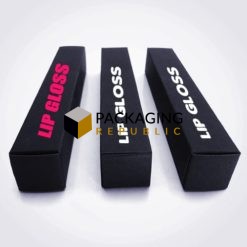Fundamental principles for powerful heat move plan

These fundamental guidelines of warm exchange configuration will build your undertaking’s effectiveness, decline energy misfortune and improve your interaction. Electric heaters can convey heat exactly where you need it and, when cooperated with appropriate thermocouple position, keep your cycle in charge and at a consistent state. In any case, helpless heating framework plan or sensor arrangement will result in under ideal outcomes, expanded piece and untimely heater disappointments.
Understanding the essential standards of heat and heat move is imperative for the achievement pace of ventures and to address normal difficulties before they happen. Heat move properties are similar to a sound wave. An apparatus that has heat going around a corner, through strings or hopping across non-machined surfaces is anything but a sensible assumption for any true framework. Heat is energy and, along these lines, should adjust to the laws of material science. With some essential plan rules in your heat move tool kit, you will be bound to accomplish your ideal objectives and effectively keep away from expensive mix-ups. These essential standards of warm exchange configuration will build your undertaking’s proficiency, decline energy misfortune and upgrade your cycle.
Give heat a straight way
Similarly as when the feline lies on the radiator in the colder time of year and the room gets cold, you can’t anticipate that heat should get starting with one point then onto the next by mysteriously circumventing an obstruction. Finned tubes Openings, spaces, pockets and interface surfaces without a conformal material are for the most part freedoms to prevent heat from getting to where it needs to go. To delineate this, consider an application where the area of the thermocouple in a bunch of bundling jaws blocks heat to move to the fixing surface (figure 1). In the finite-component examination (FEA) picture, the thermocouple opening is the more modest opening on the right over the heater. For this situation, just 66% of the seal face is inside a 6°F (3.3°C) temperature band. Wattage conveyance in the heater can help even out this profile. Just by changing the watt thickness at the closures of the heater, 86% of the seal face is held inside the 6°F (3.3°C) temperature band. The opening is as yet present, however heater plan and format can repay with expanded wattage to recuperate the fixing face. Once in a while, there are simply troublesome plans with no other useful other option. When confronted with one of these difficulties, a heating master can give choices you probably won’t have in any case thought of.
Plan for fit to save bore and depression uprightness
A fantastic fit means expanded energy investment funds and longer life. By definition, electric heat is 100% proficient. What isn’t 100% proficient is the course of heat moving from the heater to the interaction or item that should be heated. To get the best presentation from an electric heater, the heater should have close contact with the cycle. For a high watt-thickness cartridge heater, that can mean a heater drill/opening held to ±0.001″ resistance from ostensible, and a heater body planned with a Commotion standard g6 underestimate condition. These plan conditions will guarantee a tight, sliding fit. A superior arrangement, in any case, might be to press the heater into the instrument. This considers ideal heat to move to the interaction and a higher surface watt thickness on the heater for longer life. In the event that you choose to press the heater in, be cautious that you are not further compacting the heater. Remember that compacting is not the same as disfiguring. High watt-thickness heaters are as of now compacted; be that as it may, some deformity during establishment is OK.
Energy is just acceptable in case it is controlled
Both where the temperature is detected and how much material mass is heated influences heat move. To begin with, the thermocouple situation is significant. In the event that the sensor is put excessively far from the heater and the cycle, temperature reaction can be hosed and wild. In the event that the thermocouple is put excessively near the heater and the functioning surface where the temperature should be estimated, the readings might bring about wrong regulator setpoints. Preferably, you need the temperature you are estimating to be a similar worth as the functioning surface temperature (figure 5). Right warm position diminishes the temperature differential (Δ) among setpoint and working temperature, giving a greatly improved comprehension of the genuine interaction climate.
Better plan forestalls ‘fixes’ that cause bigger issues
Heaters get hot and cool down, and that implies things move. Be that as it may, heater clients should fight the temptation to place a set screw into the side of a heater to keep things set up — not so much as a little one Air cooled heat exchangers in UAE. Utilizing set screws makes a two-overlap issue. To start with, they block heat movement. Screw strings are loaded with air, which is extremely terrible for heat move. Second, the dimple driven into the heater by the set screw applies tension on the interior pieces of the heater. This can make a problem area or cause a pressure disappointment on the obstruction wire, which is in exceptionally closeness to the sheath. In the event that you need to work with a set screw, you have not fulfilled the subsequent central issue noted in this article: Plan the heater for fit to protect bore and depression honesty. On the off chance that the heater should be gotten to the hardware body, the favored strategy is to utilize a spine welded to the heater body.


